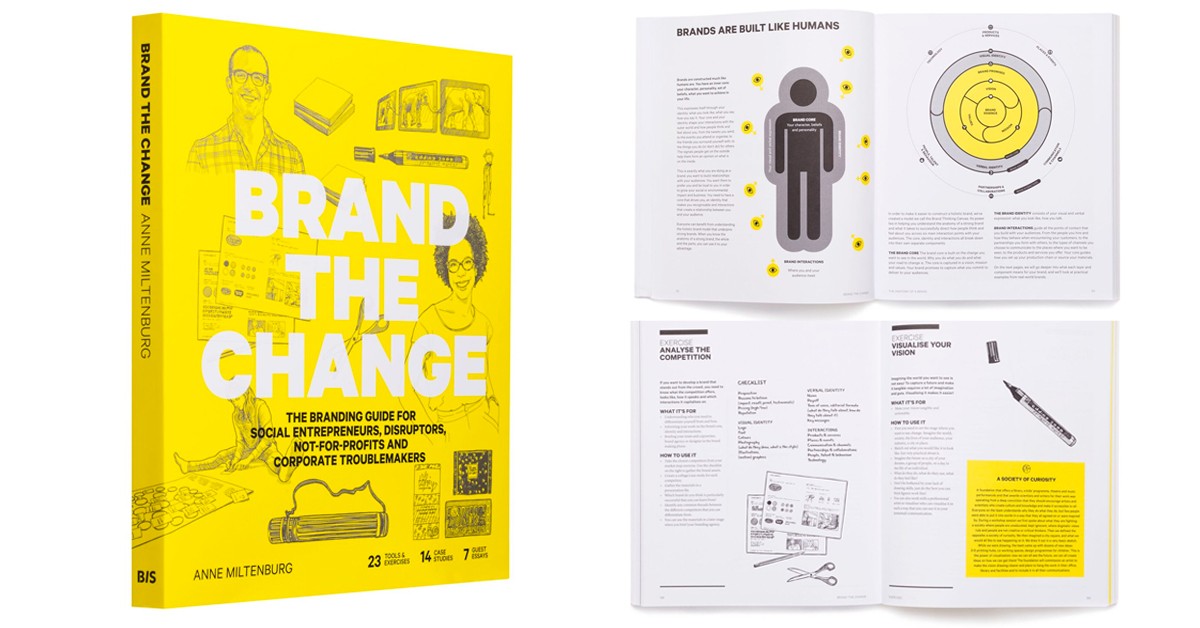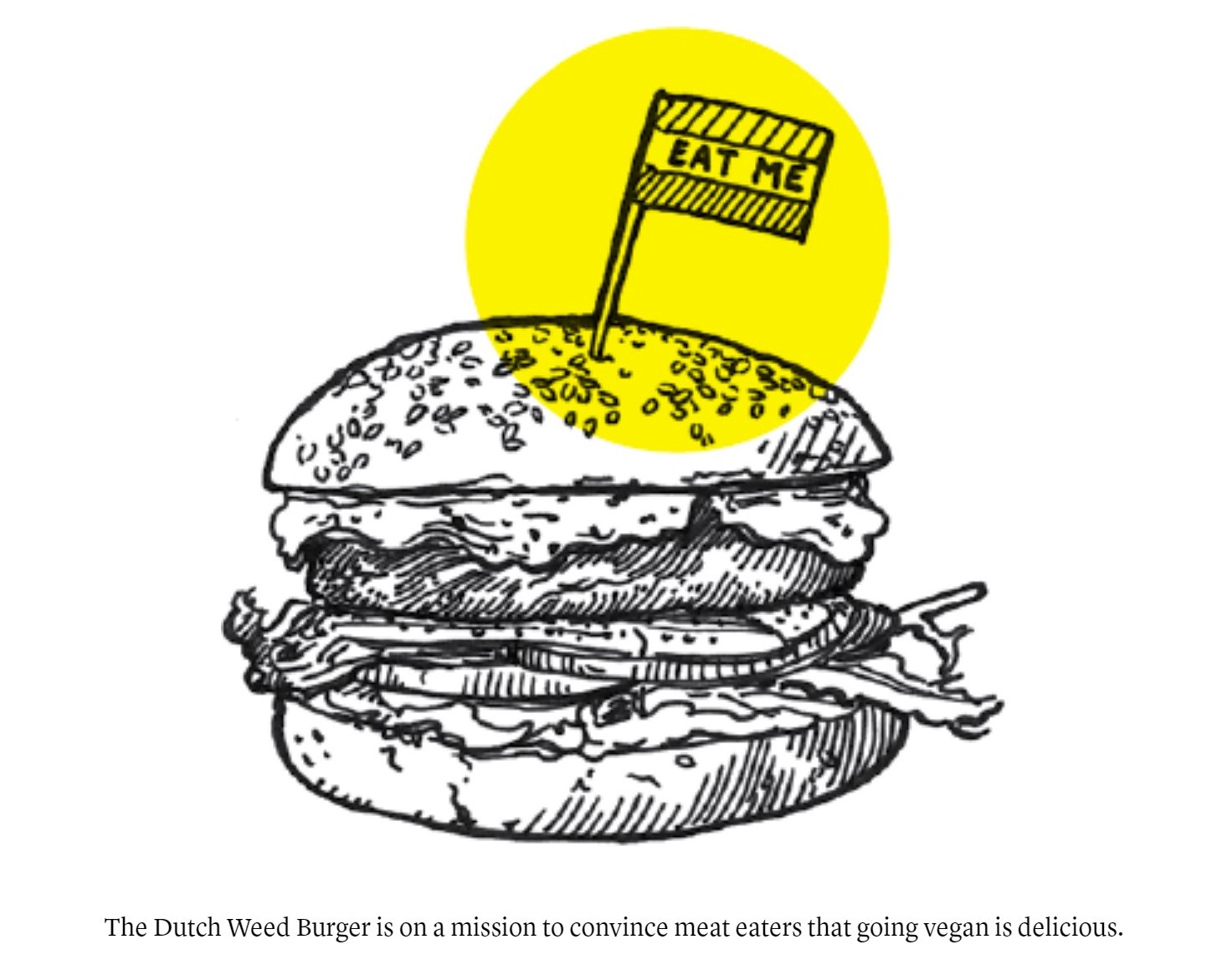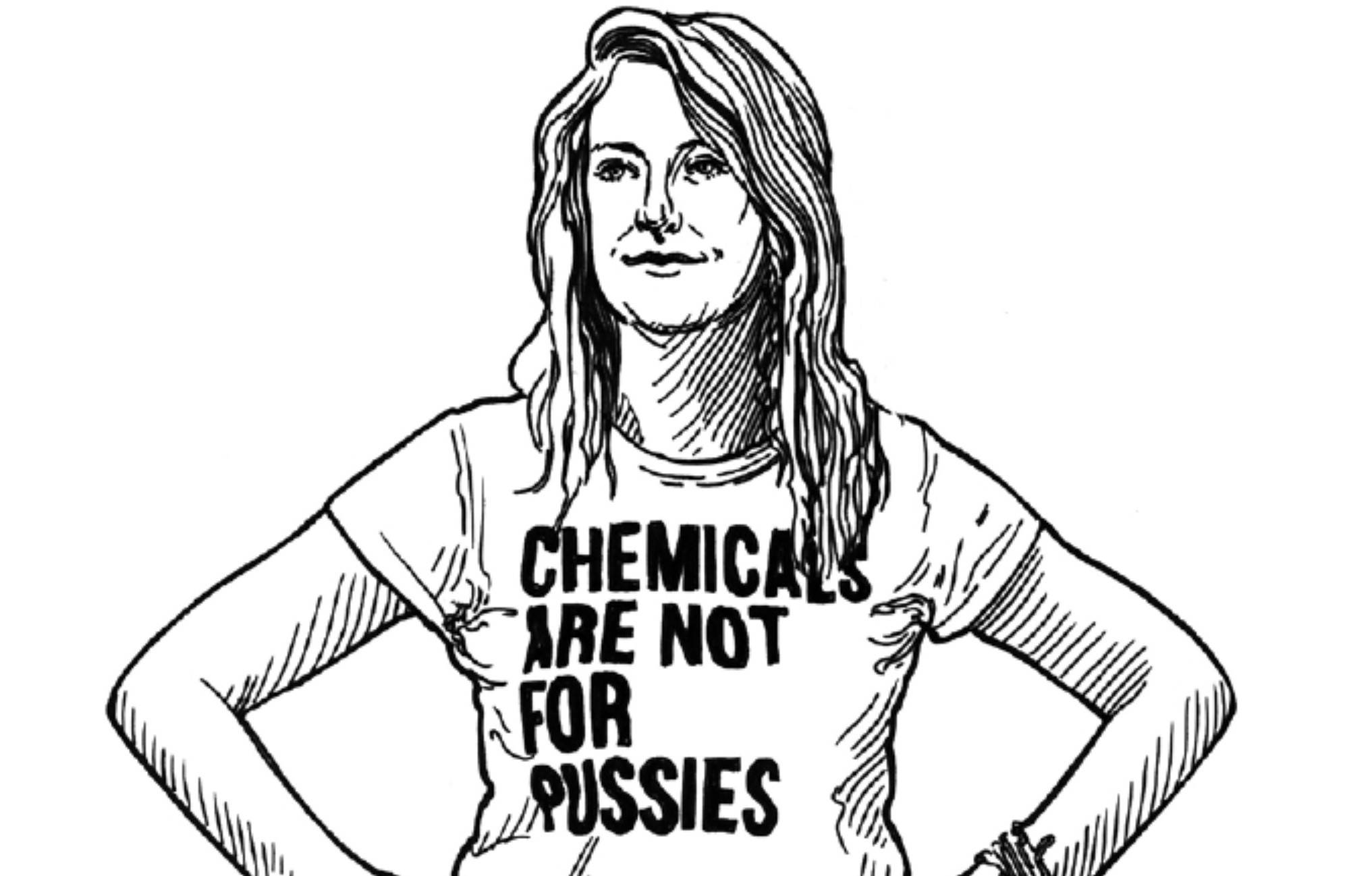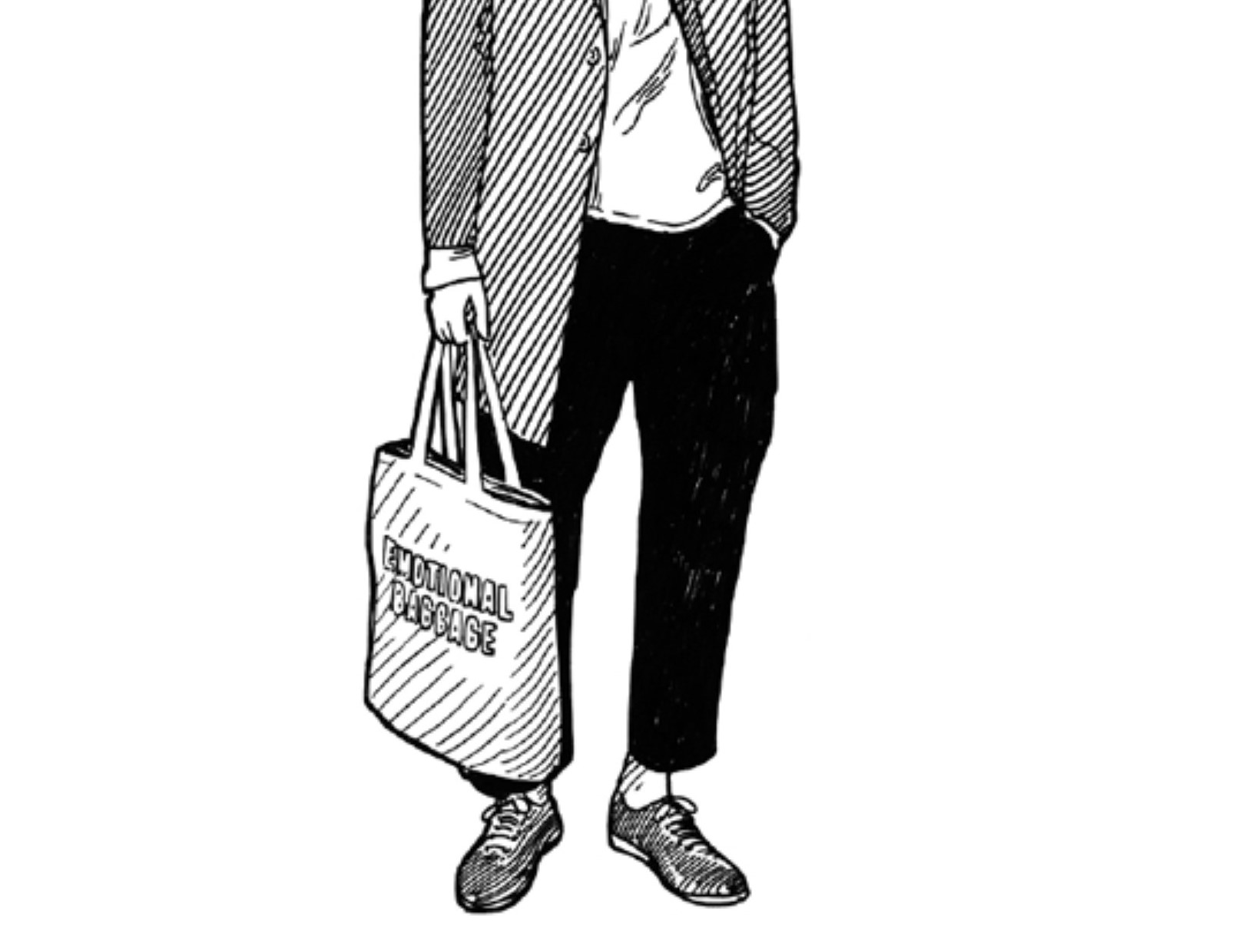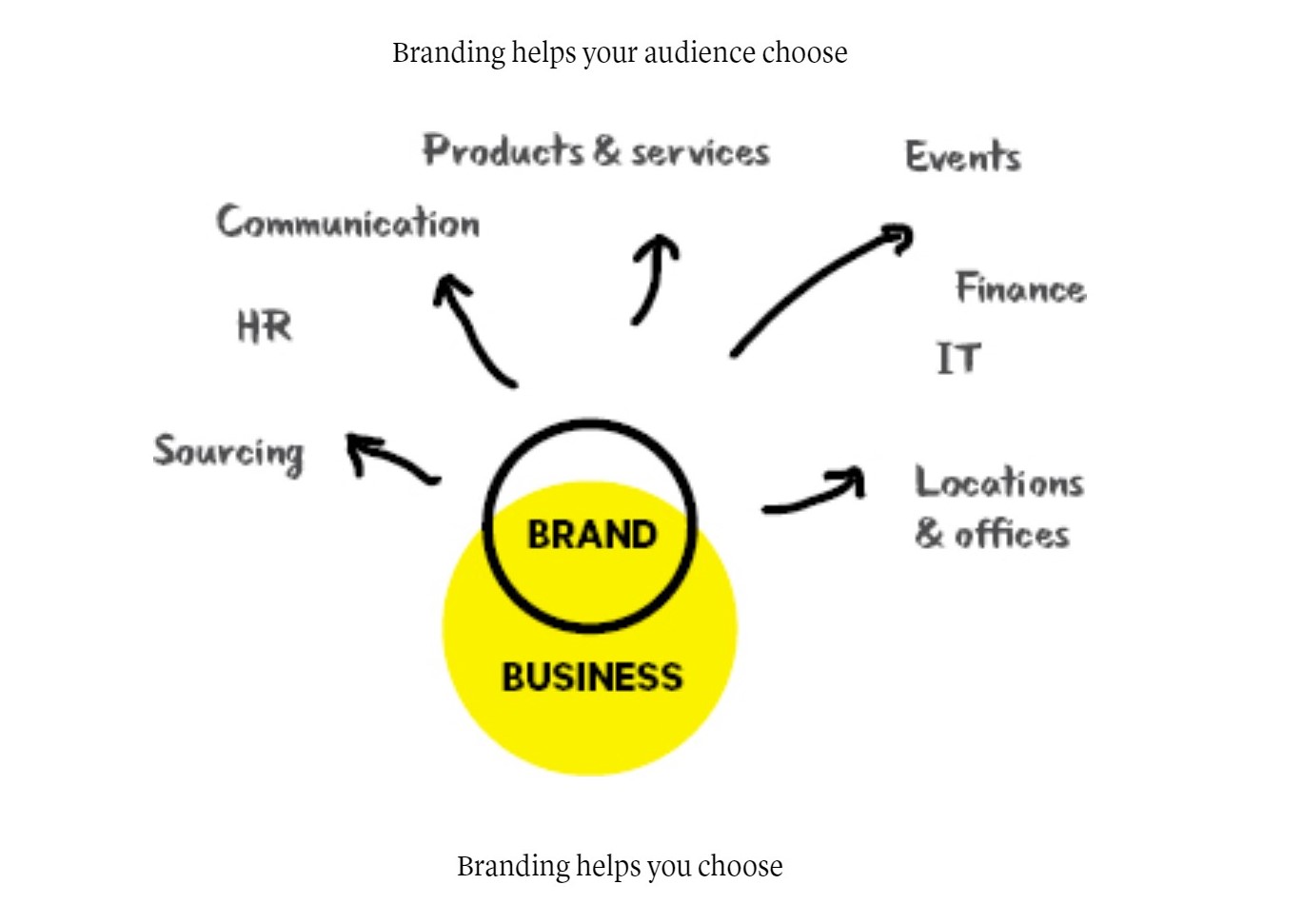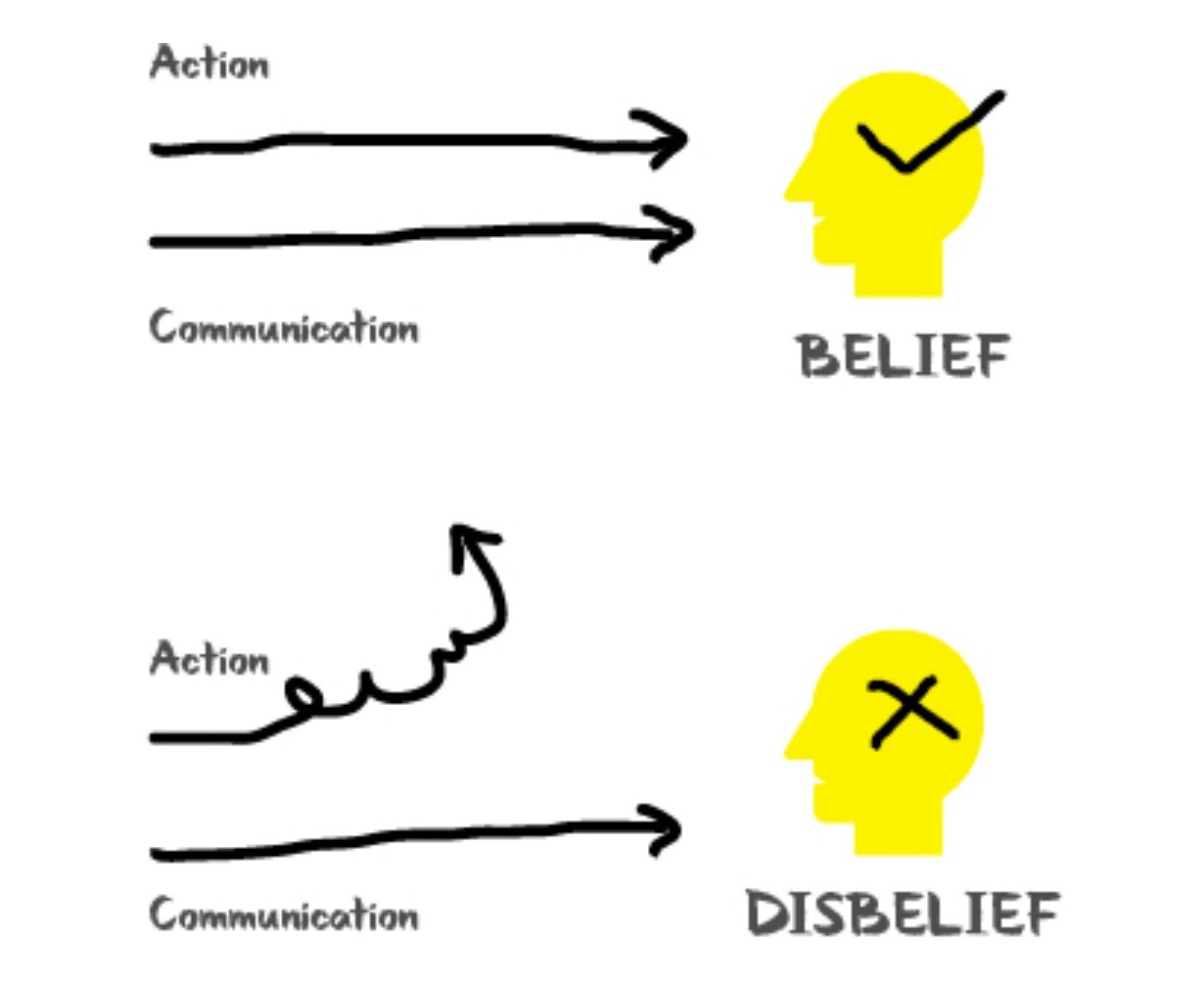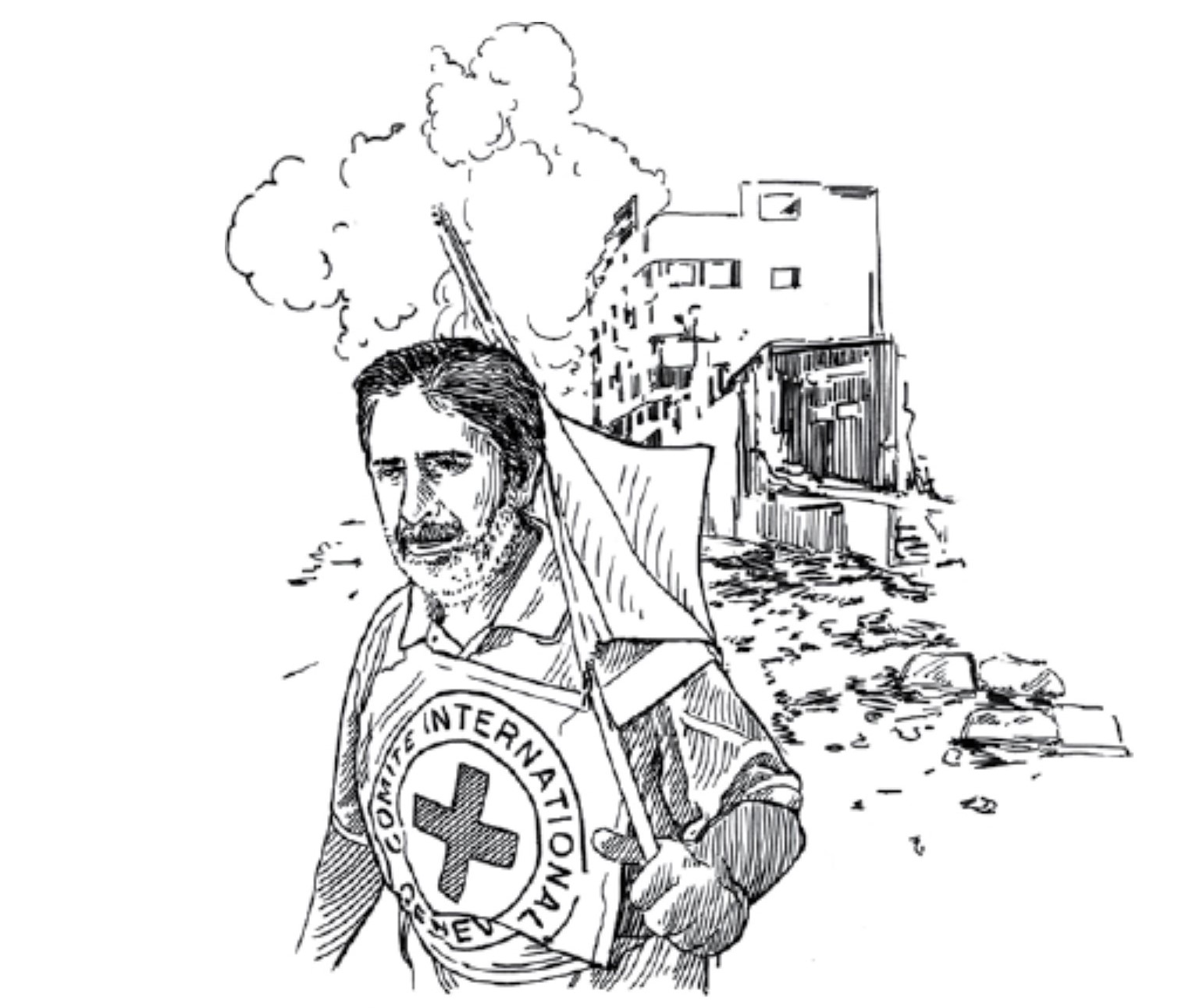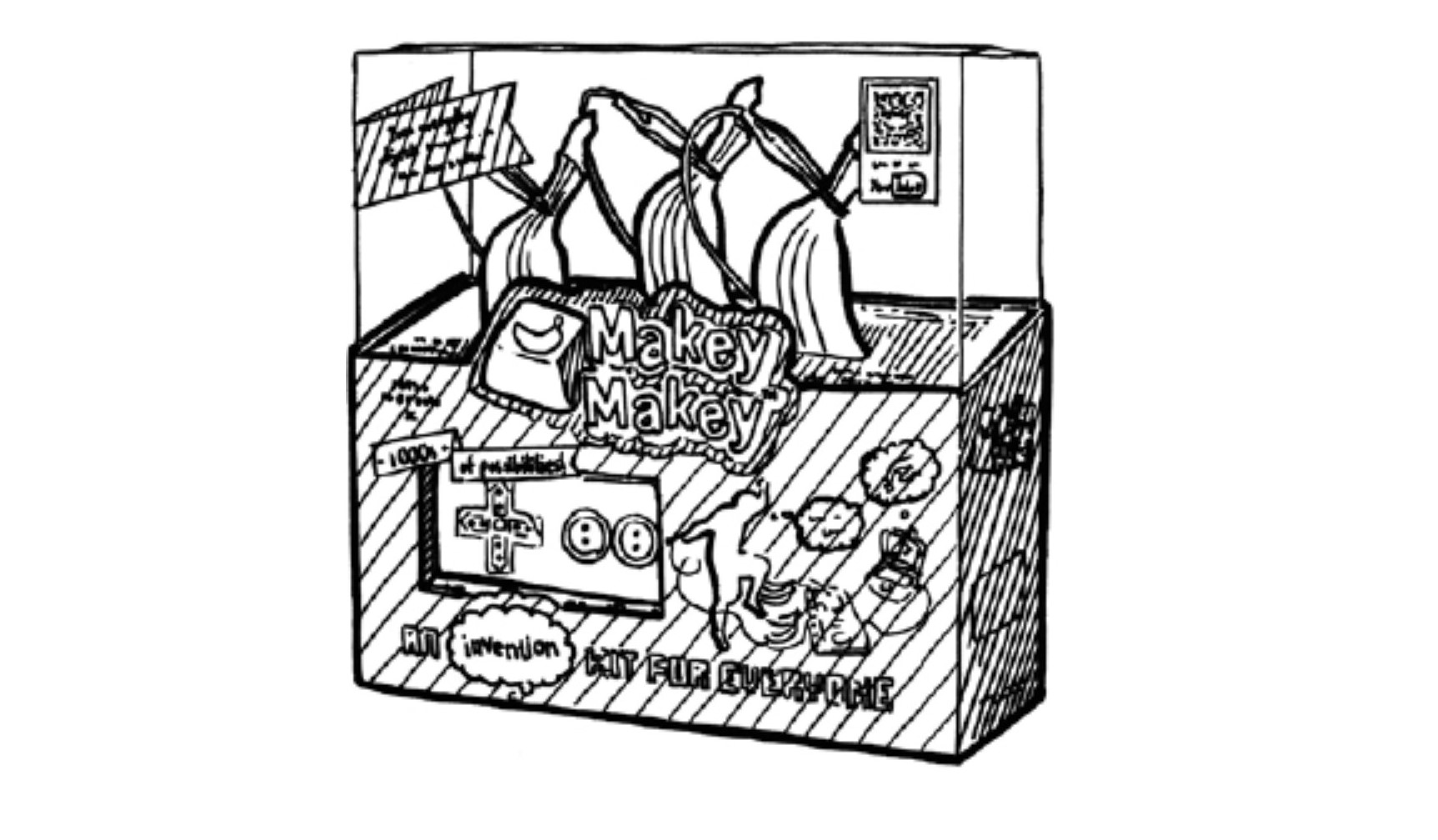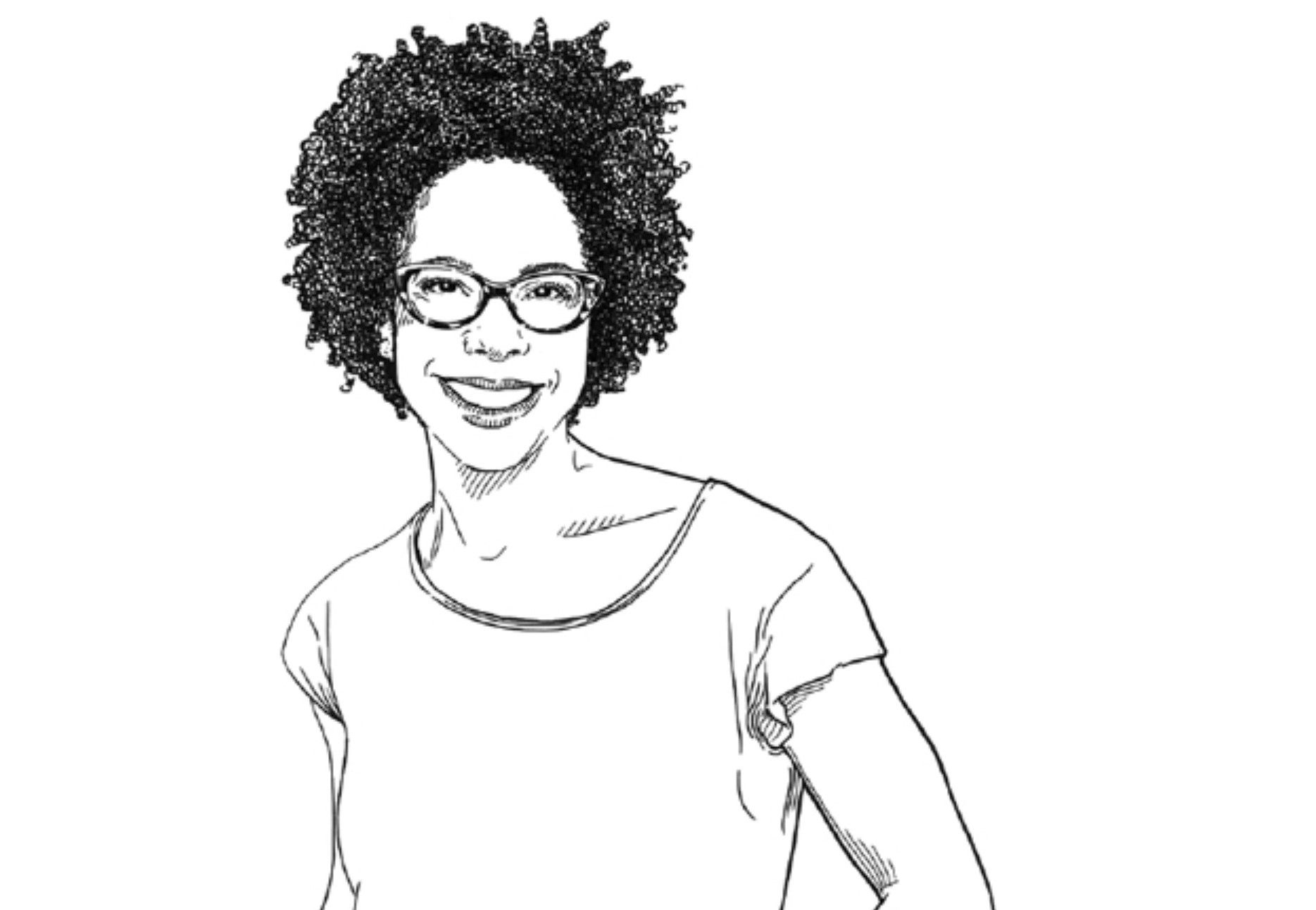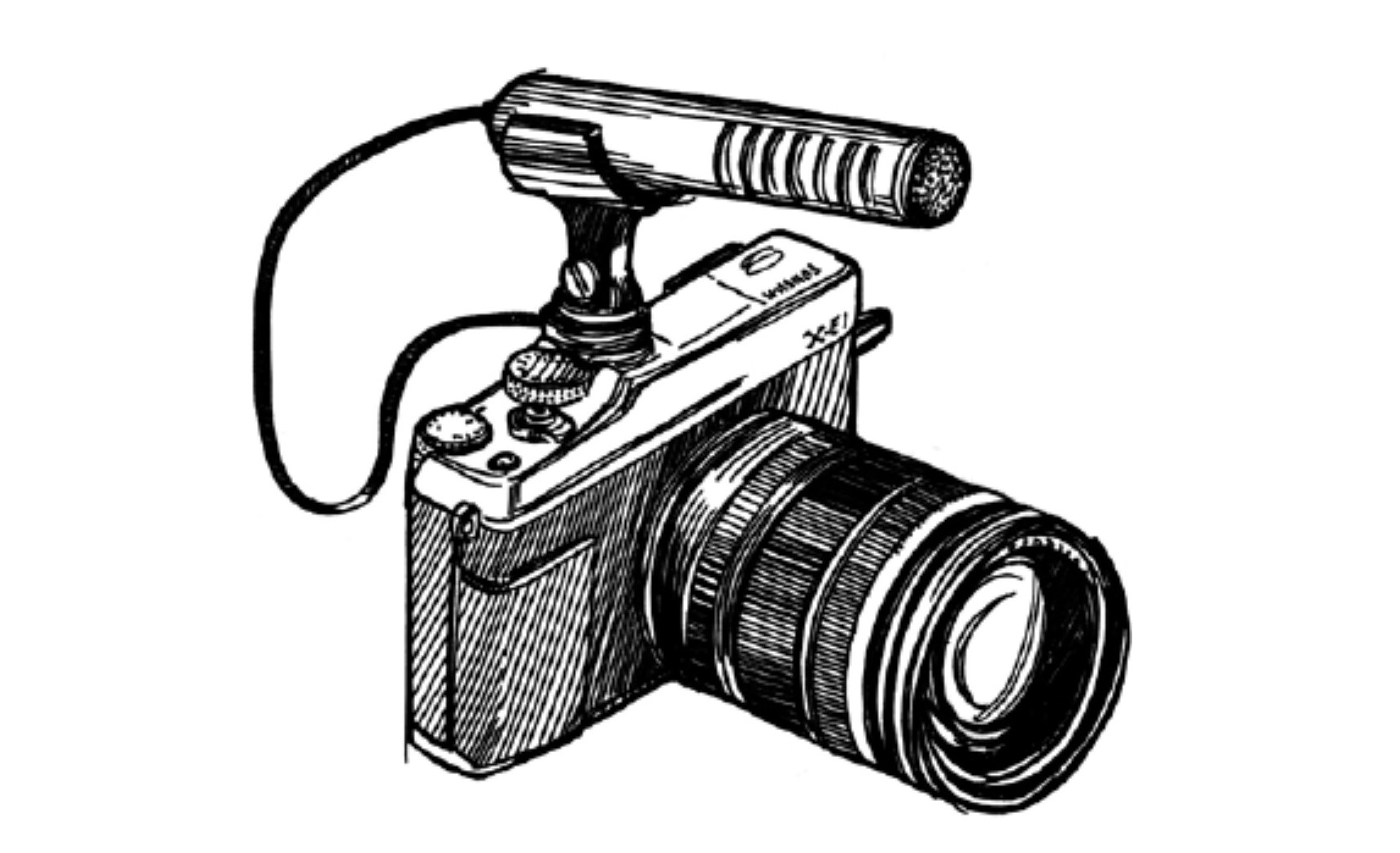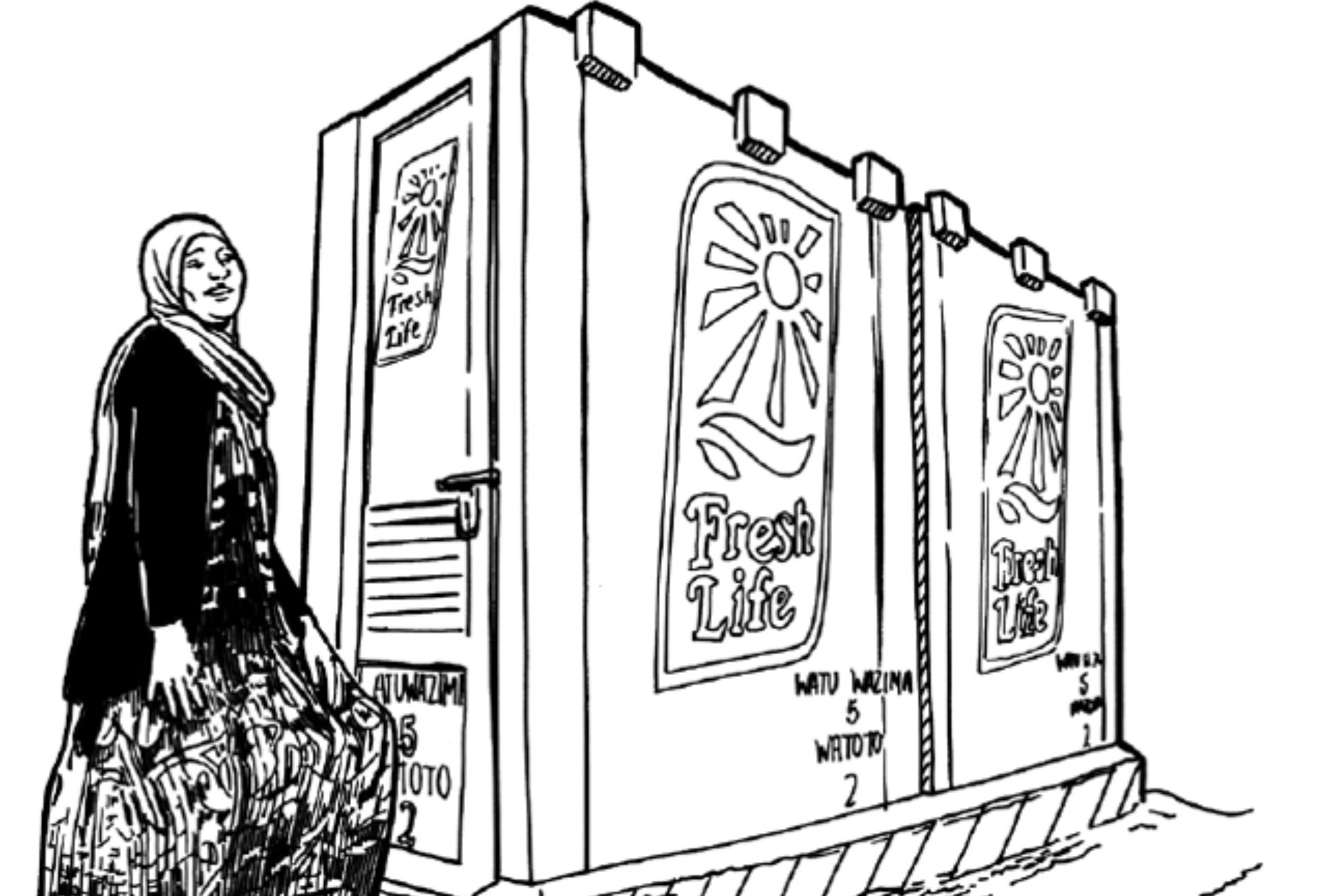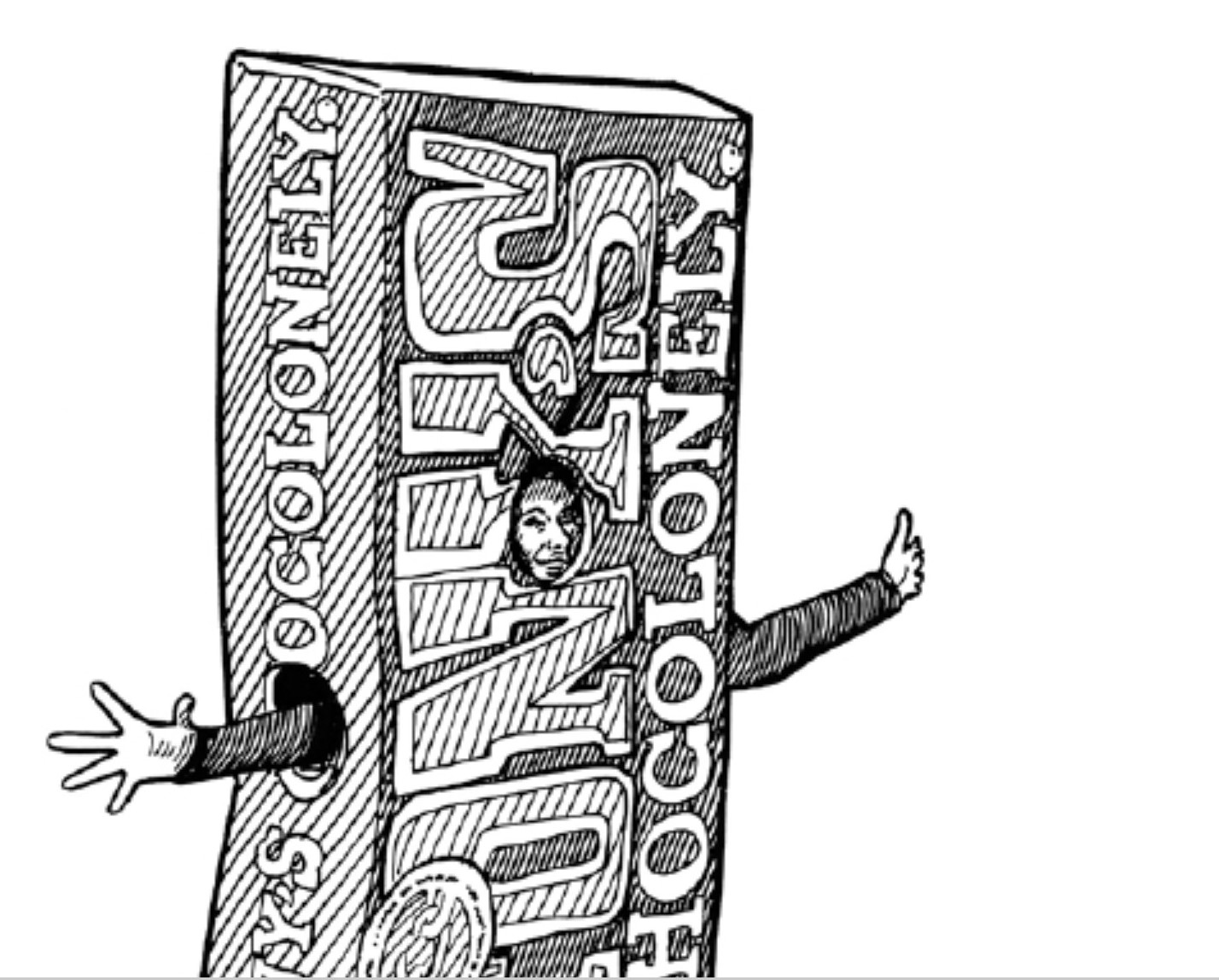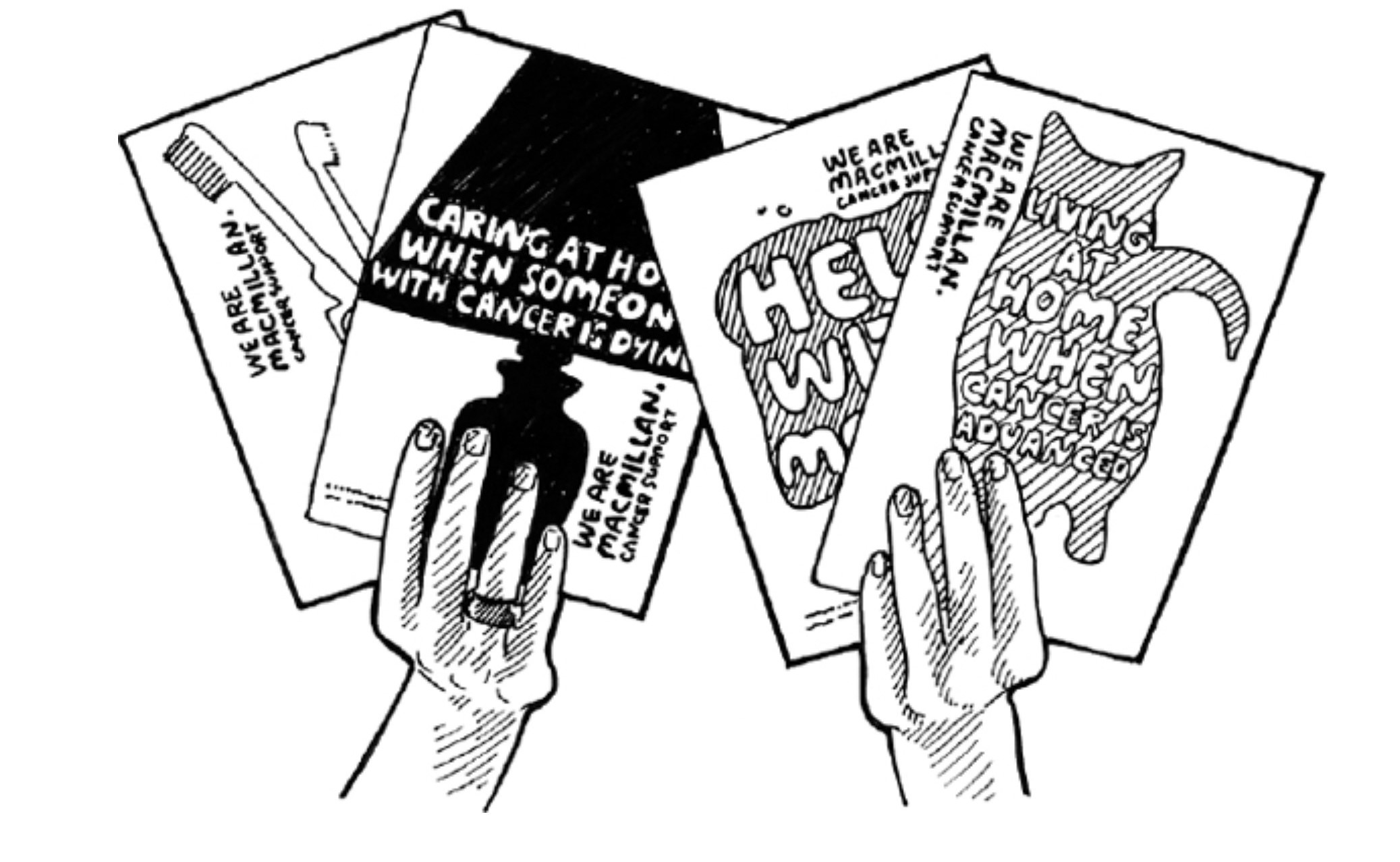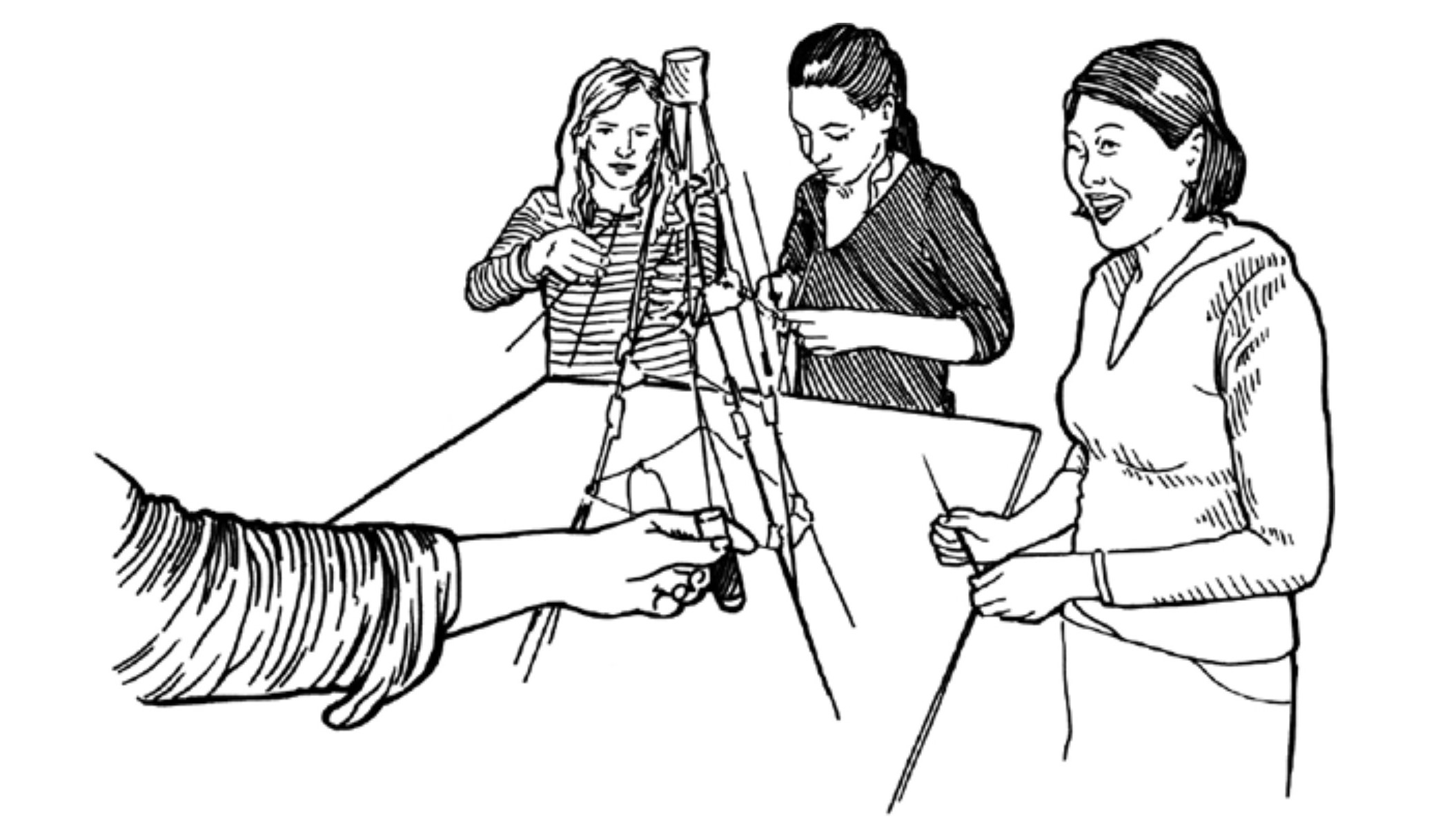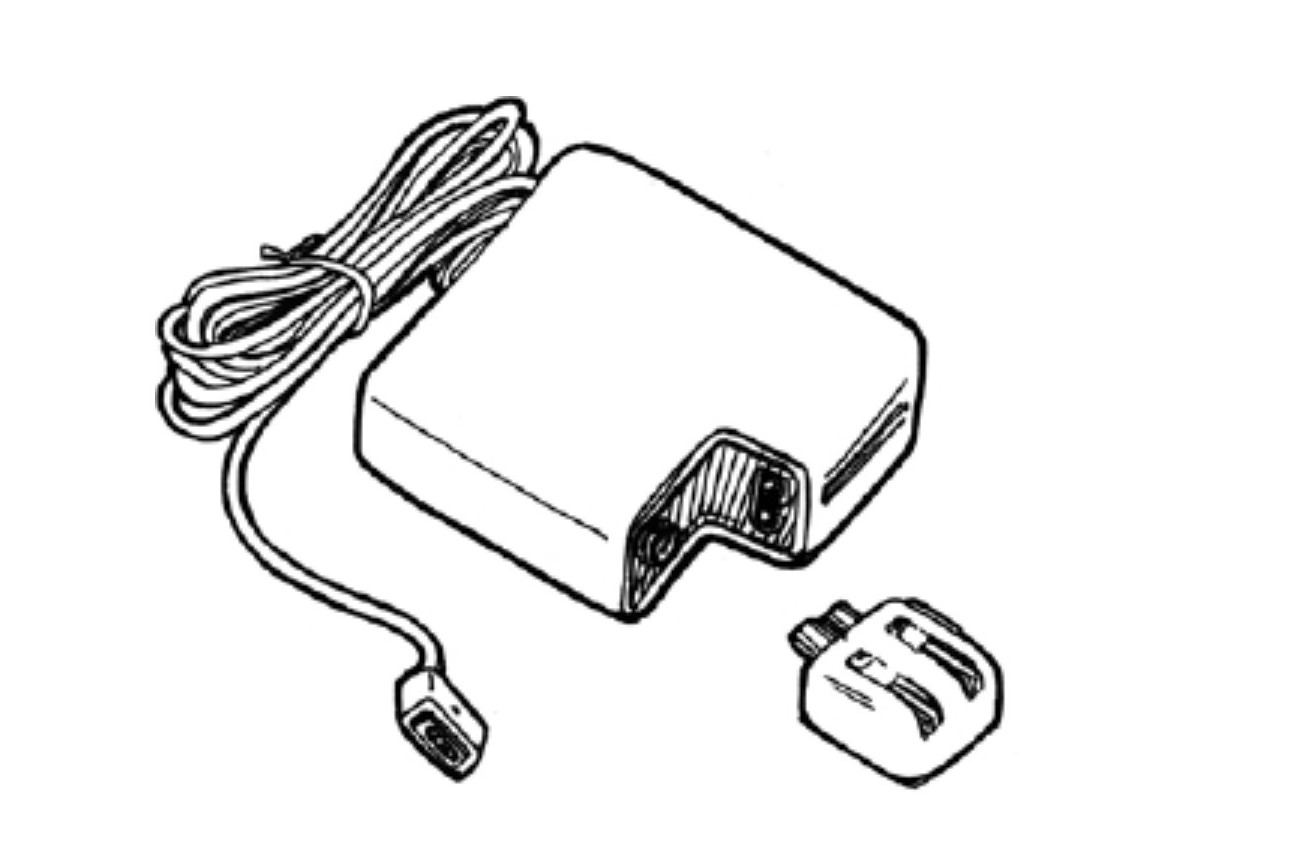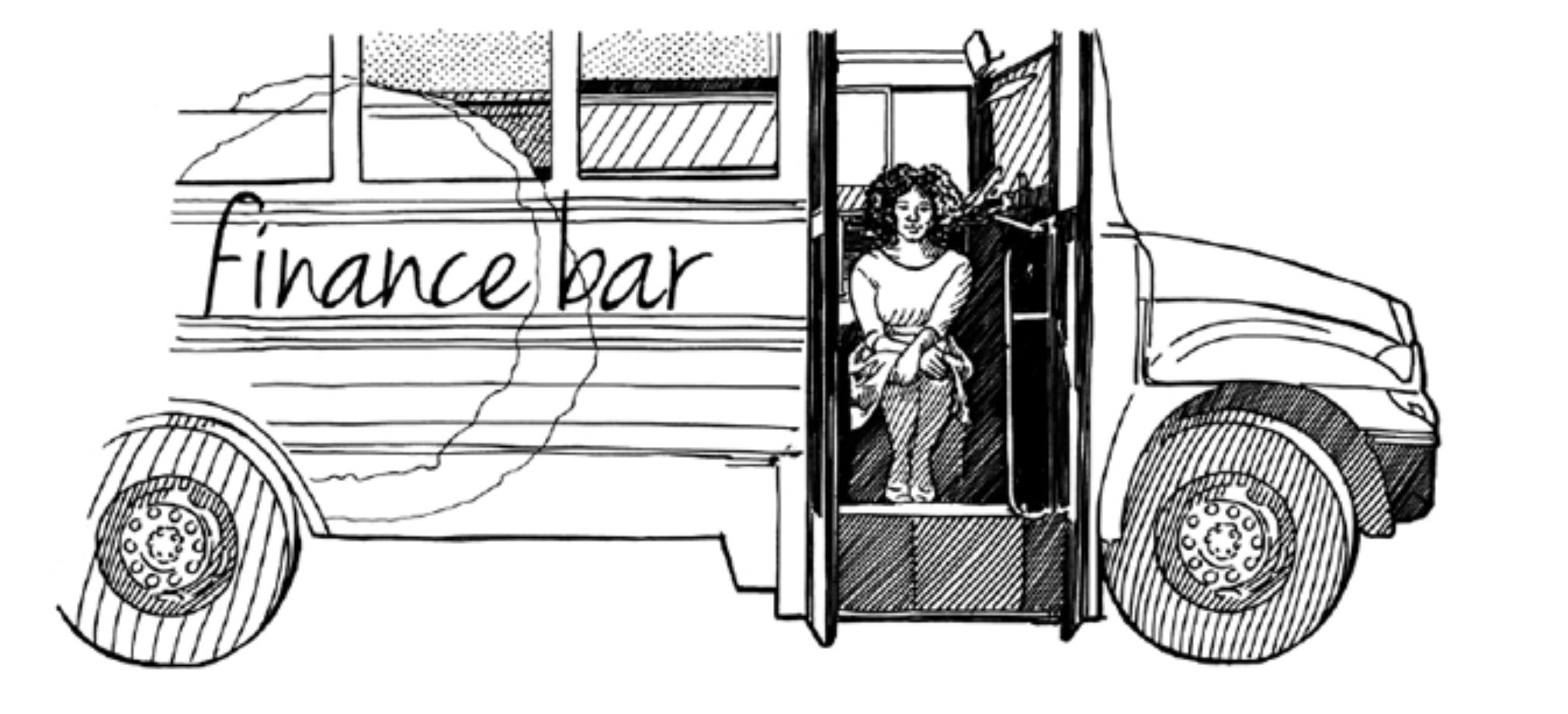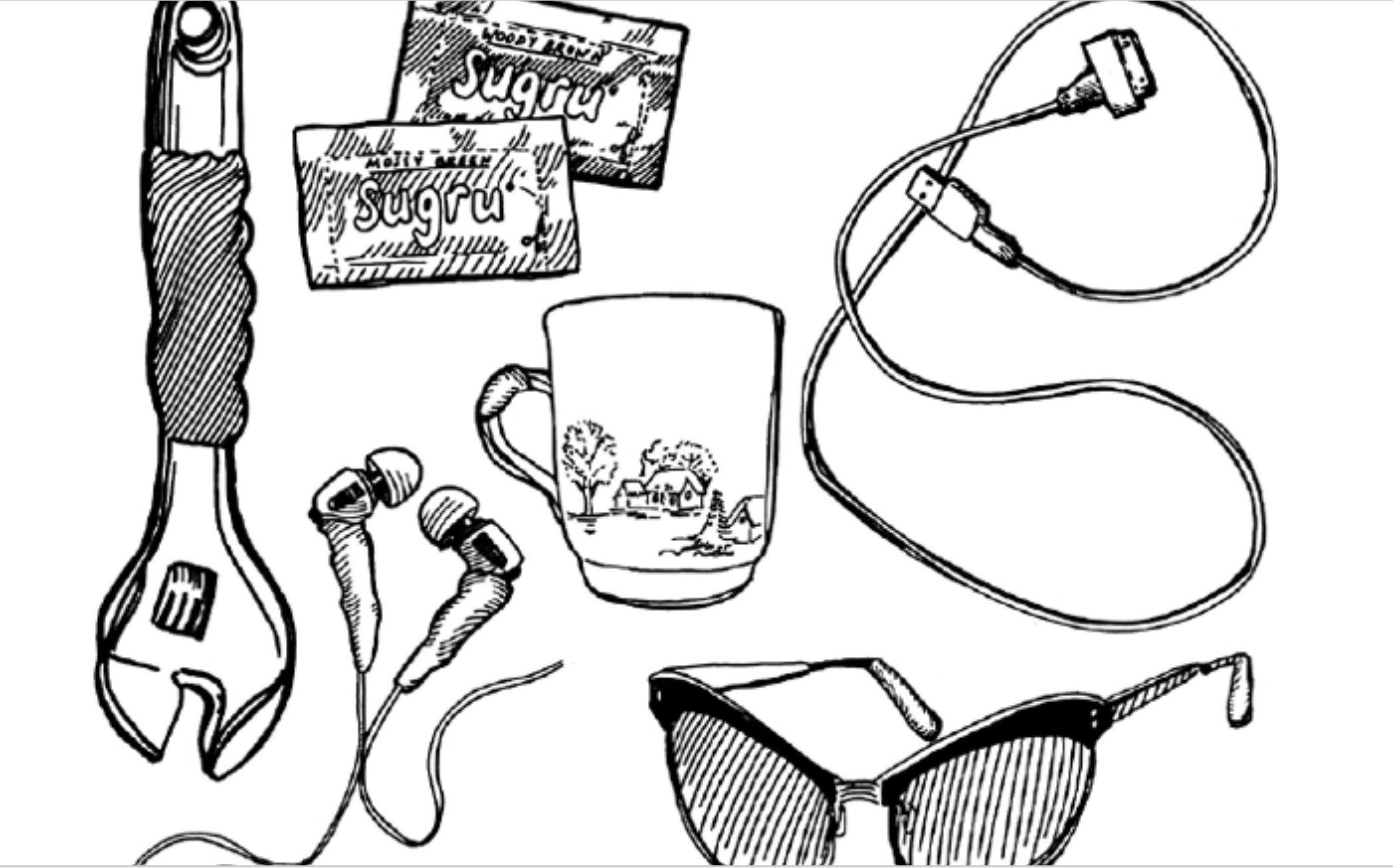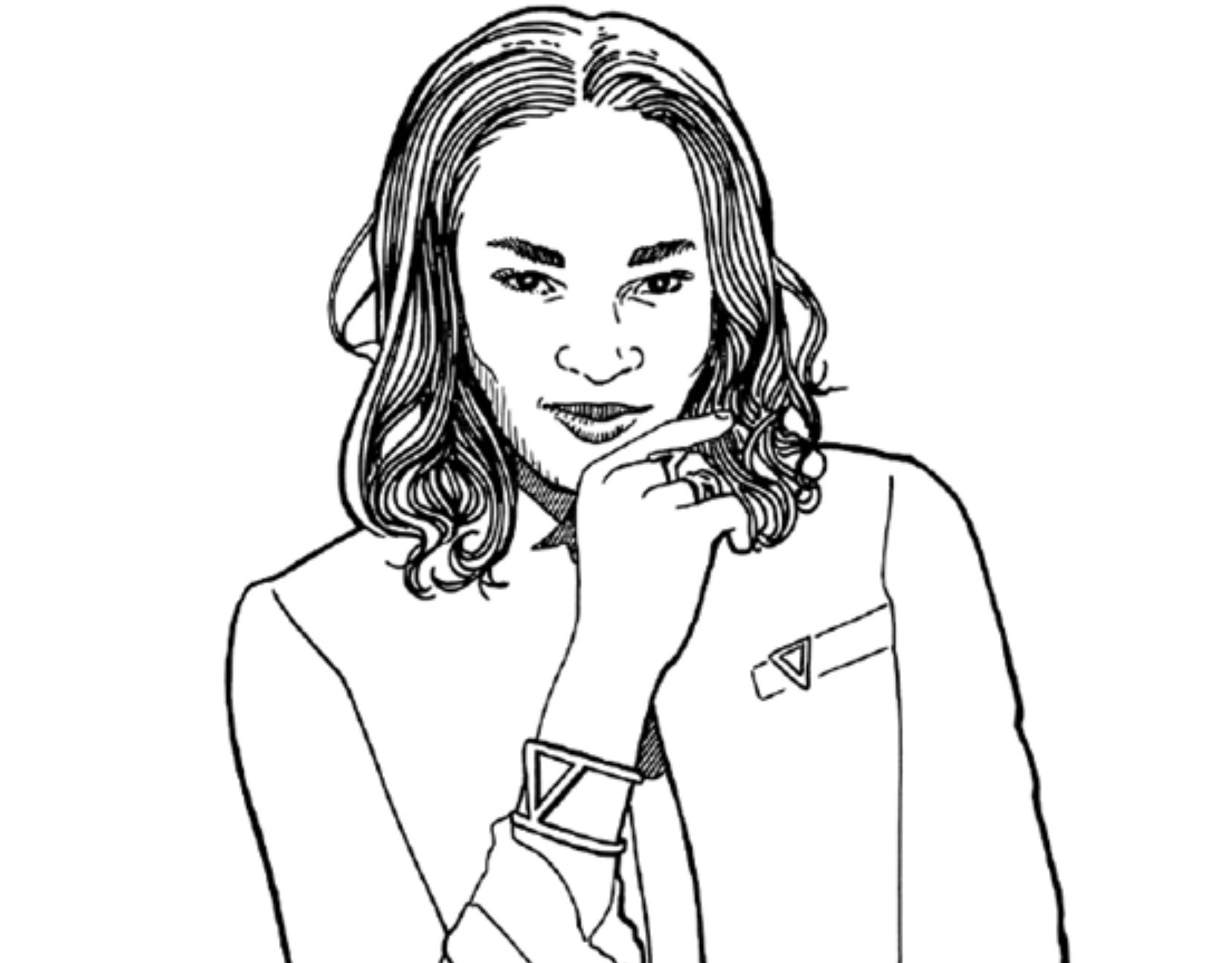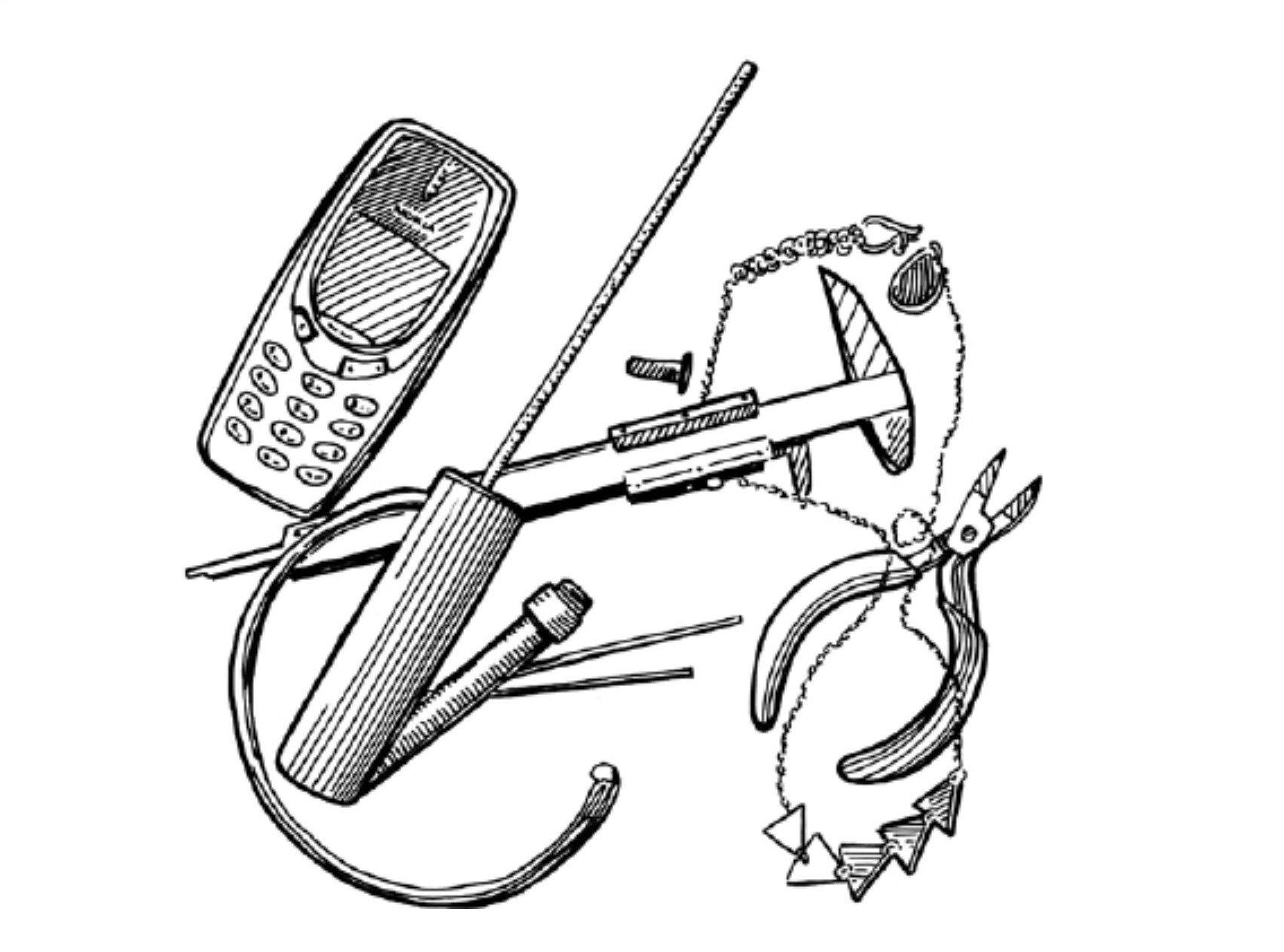START
BOOK WEEK 3:
"BRAND THE CHANGE"
BY ANNE MILTENBURG, 2017
For the third week of my EXPANSION I decided to focus on my area of interest and also choice of practice in the graphic design filed - branding. I asked my practice tutor for recommendation on which book to choose for this purpose. The one I chose from the two of his recommendations was "Brand the change" by Anne Miltenburg from 2017.
The book was described as: "In a perfect world, great changemaking ventures would grow purely based on their own merit. In the real world, we have to be creative and strategic about how we brand our initiatives and get the support we need to help them grow into effective, sustainable organisations. Creating a strong brand is crucial to increasing your impact and getting the audience you deserve. This toolkit opens up the methods of Anne Miltenburg for everyone looking to build or strengthen their brand for change: social entrepreneurs, activists, NGOs, creatives and disruptive businesses. With over twelve years of experience as a brand developer, Anne Miltenburg has worked with organisations and people as diverse as tech companies, artisans, women’s rights activists and bankers, from Zambia to Tunisia and from the USA to Saudi Arabia. To help her clients and workshop participants think like brand strategists, Anne developed tools and exercises to make the branding process easy to comprehend and apply.". That speaks for itself and to me it sounded more than promising, so I decided to go for it.
CHAPTER 1: BRANDING 101
Branding is an inherent human practice of all ages and all cultures, a way of showing who you are and what you stand for.
Branding as we know it today came of age during the Industrial Revolution. Large-scale production and faster logistics meant that the distance between producer and consumer grew.
Braning is:
-directing how other people think and feel about you.
-a person's gut feeling about a product, service or company.
-provides purpose, is a compass for direction and a filter in decision making. Branding is choosing
Your goal: to position yourself in the mind of your audience and to have their preference. Positioning is central to branding and crucial to your success.
To get on someone's mental shortlist it needs to be clear what you offer and for whom.
WHAT MAKES A STRONG BRAND?
-RECOGNISABLY DIFFERENT
-BASED ON A STRONG 'WHY'
-A STORY PEOPLE CAN RE-TELL
-CLEAR IN ITS COMMUNICATION
-A LIVING BRAND
-A STRONG NAME AND FACE
-REALISTIC AND TRUSTWORTHY
Building a brand is not an easy feat, but once you have made the investment into building a strong brand, it will start to do a lot of the heavy lifting for you.
RESEARCH HAS SHOWN THAT A STRONG BRAND...
»Can yield higher profit margins, as well as bigger financial investment and grants.
»Creates more and longer interactions with your audience.
»Builds more loyalty, referrals, and repeat business.
»Helps attract the best talent for your team.
»Helps attract better strategic partnerships.
Take into account when choosing social good for branding:
WHAT YOU THINK IS A GREAT VALUE PROPOSITION MIGHT NOT BE OF GREAT VALUE TO YOUR AUDIENCE
THE IMPACT YOU ARE WORKING FOR MIGHT BE HARDER TO ACHIEVE THAN YOU EXPECT
A BRAND BASED ON GOODWILL CAN FORGET TO COMPETE ON QUALITY
SOCIAL AND SUSTAINABLE WON’T BE DIFFERENTIATING FOREVER
Putting your social or environmental impact at the heart of your brand is often a first instinctual move when developing products or services designed to create change. But building the social into your brand is not a failsafe strategy. Consider your audience, your market and your positioning before you build your brand. If your goal is to create real impact, you might achieve that sooner through playing it down.
CHAPTER 2: CASE STUDIES
>>YONI
Organic sanitary products had been on the market for women for a decade, but the message of organic cotton tampons and pads had not reached women beyond a few die-hard organic shoppers. Yoni founders Mariah Mansvelt Beck and Wendelien Hebly want all women to have the toxic-free option.
Yoni strikes a delicate balance between its minimalist image, a voice that demands to be heard and a witty sense of humour. The name Yoni is a bold choice, a word that means ‘origin of life’ as well as ‘vagina’ in Sanskrit. Not many people outside of India would know this; to them ‘Yoni’ sounds like a girl’s name: personable and friendly. Yoni, the brand, immediately developed its own personality and tone of voice. Yoni focuses its communication on spreading the story to a larger audience by being bold and creative. For a crowdfunding campaign, Mansvelt Beck and Hebly chose the slogan ‘Chemicals are not for pussies’. Although their slogan is acceptable in Holland, a country known for its liberal culture, it might be offensive elsewhere, so it is not included on the packaging, which says simply: ‘rethinking periods’.
>>SUPERBETTER & HEADSPACE & THE SCHOOL OF LIFE
Depression, stress, anxiety and mental disorders have long been delicate subjects, but as taboos about mental health are slowly being cast off, three companies have emerged that help us live better lives by offering joyful, playful and practical services. The diversity of their goals and methods demonstrates that the branding of mental health initiatives can be as varied and distinctive as their products and services.
THE BRANDING CASE OF SUPERBETTER
In 2009, game designer Jane McGonigal suffered a severe concussion that caused her to experience depression and even suicidal tendencies. To fight her way back to health, she did what she does best: she designed a game for herself. In it, players set a goal (health or wellness) and invite others to play with them and keep them on track. She called it ‘Jane: the Concussion Slayer’ and put it online, and to her surprise, people started playing it. Realising that she could address conditions beyond concussions and that there could be a wider audience for the game, she rebranded it ‘SuperBetter’, verbalising her goal to not just get back to health, but to get even healthier than before, and the rest is gaming history.
THE BRANDING CASE OF HEADSPACE
Headspace is an app with a single voice guiding you through daily meditation sessions. That voice belongs to a former Buddhist monk, the app’s co-founder Andy Puddicombe. Though initially sceptical of online meditation, Puddicombe warmed to the idea of developing an app because he saw its potential to bring meditation to large audiences. He had already used meditation as a way to reduce stress for patients with insomnia and high blood pressure while working at a medical clinic. The financial crisis of the early 2000s brought a stream of bankers into his office, and he realised that he had to bring meditation to them in a very different way in order for them to accept it as a treatment. Puddicombe translated Sanskrit terms into English, toned down the esoteric vocabulary and shortened the sessions. The method took off. One of Puddicombe’s patients became his business partner and the app was born.
THE BRANDING CASE: THE SCHOOL OF LIFE Founded by philosopher Alain de Botton in 2008, The School of Life is an extension of his personal brand of ‘everyday philosophy’, helping people learn how to live wisely and well, addressing the big life questions that all of us ask about our loves, careers and relationships. It is a one-stop shop for emotional intelligence, offering classes, therapy, books, videos and events. The defining factor of its success is the positive frame it has created. ‘We are in the business of giving people good ideas about improving their quality of life, from coping with anxiety to managing relationships to getting a better handle on their work. It’s the thing I’m proudest to have done in my life.
RESULTS
SuperBetter has been played by over 500,000 people and Headspace has been downloaded more than eleven million times. Only nine years after its founding, The School of Life now has ten stores in twelve cities around the world, creating an entirely new market for personal development and therapy services.
Even initiatives concerning topics as taboo as depression, illness, anxiety and stress can be turned into brands that people embrace and love to be seen with. The branding of mental health is as much a mind game as the philosophies the brands represent.
>>BRCK
How a tech company from Nairobi is catching the world’s attention purely on the potential of its product.
BRCK founders David Kobia, Juliana Rotich, and Erik Hersman know first-hand how crucial it is to have access to the Internet. As the catalysts of enterprises like iHub and Ushahidi, they rose to global fame by building software to map out reports of violence during the 2008 elections in Kenya. With regular power outages comes modem downtime, with remote locations comes little or no signal. What if you had a self-powered Wi-Fi device that was built for rugged environments like the African countryside or city? What if you could connect a classroom in remote Turkana to great online educational content?
JUST BECAUSE WE DON’T HAVE A MILLION DOLLARS DOESN’T MEAN IT SHOULD LOOK SUBSTANDARD
The BRCK brand is as rugged, reliable and down-to-earth as its product, both visually and verbally. Bold blacks and bright yellows combine with a clean graphic language that can compare to that of the best tech brands in the world. The visual appearance of the brand contrasts with the mud and dust in the documentary videos of the BRCK team on expedition to some of the remotest parts of Kenya. Maina: ‘We go on expeditions to test the product, and we film this process. And people are impressed. We’ve always worked with stories. We tell what the product can do for you. The story sells.’
RESULTS
Since its start in 2013 BRCK has seen growth without relying on traditional marketing or advertising methods. To date they have sold 2,600 units. An in-house creative director is key to building and protecting a brand. Maintaining quality in every aspect lays the foundation for a great return on investment. When meaning is built into a product, your brand thrives on storytelling.
>>MAKEY MAKEY
How a product inspired by the maker movement was repackaged to reach its full potential.
Makey Makey is the brainchild of Jay Silver and Eric Rosenbaum, who believe that everyone is creative, inventive, and imaginative, and that technology can be presented in a way that enables people of all ages to play and experiment with it. Based on this insight they developed Makey Makey, a simple invention kit for beginners and experts doing art, engineering, and everything in between. The first commercial edition of Makey Makey was realised through the support of 11,000 backers on Kickstarter.
Makey Makey started as a niche product for the maker movement and was initially only sold by the inventors online in a small, green e-commerce box featuring the circuit board and a number of things it could connect to. Fairly soon, however, the retail world came knocking, and Makey Makey realised that a chain like Toys“R”Us could help them reach a far larger audience. But to be able to sell at scale, they needed to upgrade their packaging. The simple box designed for the kickstarted campaign just could not compete with the visual assault in the toy aisles.
‘Makey Makey as an “object” really isn’t all that interesting; what matters is the creative behaviour that it enables as a tool. It’s the world reconsidered. The new packaging needed to vivify this … easy, right?(!)’ Makey Makey’s signature red features prominently on the new boxes, which boldly display the kit’s alligator clips attached to banana cut-outs, fun and creative elements that illustrate the product’s purpose and proposition.
RESULTS
Makey Makey is now sold at stores like such as Walmart, Best Buy and Barnes & Noble, as well as on platforms like Amazon, and of course through the inventors’ website. Over 400,000 units have been sold, bringing the maker movement to the grand stage. In order to grow your movement and realise your vision, designing for a commercial context is necessary to achieve scale.
>>DR AYANA ELIZABETH JOHNSON
What do all good leaders have in common? They stand for something. They make sure the right people know about it, and they make a plan to attract their support. Great leaders think a lot like brand strategists. Dr Ayana Elizabeth Johnson is thoughtful and deliberate about building her profile, crafting compelling proposals for action and spreading them far and wide through platforms like National Geographic and The New York Times, all in the service of the ocean and the communities that depend on it.
Pursuing clarity requires a big time investment. Dr Johnson: ‘It takes so much work to distil things to the point where you are really clear, but it is always worth the effort. For example, the phrase “using the ocean without using it up” is something that took me about a year to formulate while working on an ocean zoning project.
‘When you talk about conservation, people think you want to go and save dolphins. And dolphins are fine but that is absolutely not why I do ocean conservation. People thought I was the ocean equivalent of a tree hugger, that I cared more about sea creatures than I did about people.’ That misperception can result in not getting your ideas implemented.
RESULTS
At 37, Dr Johnson has an impressive list of successful conservation interventions on her CV. Her design of a fish trap with escape slots reduces bycatch by ~80%, without reducing fishermen’s incomes, and it is now required by law in several countries. She led the Caribbean’s first successful island-wide ocean zoning project, resulting in the protection of one-third of Barbuda’s coastal waters. As a leader of the March for Science, she helped bring together over a million people worldwide to advocate for the role of science in policymaking.
In order to get people to implement your proposal for change, your ideas need to be clear and relevant to the audience. Carve them out over time, test them again and again. A strong profile positions you at the optimal place to take opportunities as you pursue and create them.
>>SANERGY/FRESH LIFE
In low-income countries, lack of hygienic sanitation is a leading cause of disease, death and loss of GDP. Sanergy designs and manufactures low-cost, high-quality sanitation facilities and collects the waste, which it converts into products such as organic fertiliser and renewable energy. The sanitation units are run by a network of local residents who purchase and operate them.
The co-creation process is ingrained in everything Sanergy does. ‘We use it in every aspect of our business, including the design development of the sanitation units themselves. We solicit feedback from the toilet operators, and we solicit feedback from the users.’ Based on the feedback, Sanergy has adapted the squat plate design, installed hooks and mirrors, and is rolling out a design with squat supports for customers with impaired mobility. ‘Since it is a pay-per-use service, you want customers to be as happy as possible with the experience and come back again and again.’
TESTING WITH THE COMMUNITY IS CRUCIAL
‘To have our team sitting at a conference table and making decisions around what would appeal more to our target users does not make sense. Most of our team is Kenyan, and many are from the communities we serve, but soliciting feedback from our target users provides us with information we wouldn’t otherwise have.’
RESULTS
The impact of Sanergy’s efforts can be measured directly by weighing the human waste collected, and to date, Fresh Life has safely collected and removed 12,000 tons of human waste from informal urban settlements and created 900 jobs in the communities it serves. It is currently logging more than 55,000 users every day. With branding driving direct results in the increase in use, the local team of brand experts and marketeers is helping the company and the community to thrive.
When building a brand for a community whose life, motivations and considerations are far removed from your own, a co-creative process and continuous testing are vital to building trust in your brand and helping your venture thrive.
>>TONY’S CHOCOLONELY
How a fictional chocolate brand became the leader of the pack.
The last person on earth who could have foreseen the success of anti-slavery chocolate brand Tony’s Chocolonely was its creator, Dutch journalist Teun (Tony) van de Keuken. In 2003, as part of an ongoing TV series exposing the ills and oddities of the food industry, van de Keuken exposed a world of slavery behind the chocolate bar. Investigating whether it was at all possible to produce chocolate untainted by slave labour, he created a fictional product purely for investigative purposes. His prototype bar resonated with the Dutch public, and the brand is now celebrating its twelfth year.
When Dutch designer Arjen Klinkenberg, known as Klink, offered to create a wrapper for van de Keuken’s prototype slave-free milk chocolate bar, neither was aware of the raging success they were about to unleash. In a little over ten minutes, Klink created a bold, eye-popping label that could have come straight out of Charlie and the Chocolate Factory. He also flaunted convention by making it red, a colour normally reserved for dark chocolate. Klink: ‘It was my point to do it differently from the other chocolate brands. So I chose the colour red instead of blue to reflect the alarming message, but above all to make people think about what they pick from the chocolate rack. Especially in the first years we often got complaints from people, but our message was: think, read the packaging, be aware of your actions.’
‘Our mission is based on working together, so social media is the logical approach. We put a lot of time into conversing on Facebook, but also inviting people to stop by our office and showering them with chocolate.’ The presentation of the annual report is a public event that friends are invited to and anyone can sign up for. It is part forum for discussion with guests and part party, and it is streamed online. Another example of creating a two-way friendship is their monthly meetup on a Friday afternoon about a new product or recipe, with, of course, chocolate and beer. Anyone can join and critical questions are encouraged. The bar for getting in touch with the team is set purposefully low.
RESULTS
Tony’s Chocolonely has gone from investigative journalism project to second-largest chocolate brand in the Netherlands and is expanding across Europe and the US. Clash with your environment: the bland can’t lead the bland. When faced with setbacks in your impact model, be as open and transparent about it as possible.
>>MACMILLAN CANCER SUPPORT
How a hundred-year-old organisation reinvented its brand to double its impact and increase its fundraising by tens of millions of pounds.
At the heart of the transformation was the brand idea, ‘life force’, which drives both services and communications. While other cancer charities are focused on either finding a cure (Cancer Research UK) or caring for the terminally ill (Marie Curie), Macmillan has firmly positioned itself in the area of ‘living with cancer’. They changed their name from ‘Macmillan Cancer Relief’ to ‘Macmillan Cancer Support’, a positive, everyday source of help for anyone affected by the disease.
The new brand identity also needed to feel approachable and inclusive rather than institutional and authoritative if Macmillan hoped to grow its volunteer base and its ability to support more people. To drive a movement that everyone could be a part of, Wolff Olins developed a radical visual identity with a unique, handcrafted font and bold silhouettes in a palette of bright greens. The brand expression is not only memorable and distinctive, but also compassionate, inspiring and action-driven, evincing a deep understanding of the strange new world that people can find themselves in after a cancer diagnosis.
RESULTS
After a £120,000 rebrand, Macmillan has a strong position amongst charities. It now ranks joint fourth in spontaneous brand awareness, income has increased from £97.7m in 2005 to £244.9m in 2016, and most importantly, in 2016 the charity gave 1.4 million people personal support, either face-to-face or over the phone, and helped millions more through their information and support materials. The new brand has also helped attract better talent to the organisation. One in two people interviewing for a job at Macmillan cite the brand as the reason they want to work there. More volunteers have joined, and strategic partnerships, for example with Boots pharmacy, have provided Macmillan with a high street presence.
A clear understanding of your image and the changing times and context you operate in is vital to survival. Taking a clear position, standing out from the crowd and creating inclusive and outstanding experiences are all crucial to building a movement.
>>THNK
How an Amsterdam school went from zero to one and is defining a new category in education.
While a ‘b-school’ teaches students about business, and a ‘d-school’ teaches design, THNK is a ‘c-school’. Menno van Dijk, co-founder: ‘We positioned THNK between the b-school and the d-school, an alphabetic positioning. We are not a blend, we are defining a new category.’ Defining a new category is a tough branding challenge, but van Dijk sees only advantages. ‘It is easier than defining it as a superior concept within an existing category. You could only do that by having higher quality or lower cost. Particularly in the area of executive education, you are up against some serious names.
IF YOU DEFINE YOURSELF AS A COMPLETELY NEW CATEGORY, YOU PUT YOUR COMPETITION AT A DISTANCE
To van Dijk, there is no difference between the brand and the business. ‘One side is your brand and your brand positioning, your target group and the particular product or service that you offer. Then there is a whole delivery system, the quality of the people that you put into it, the faculty, the way you deliver things – all those elements have to be fully consistent; they feed each other.’
BE EDGY WHERE YOU ARE EXCELLENT AND EXPECT EXCELLENCE OF OTHERS IN THE AREAS WHERE YOU ARE MERELY OKAY
RESULTS
Over 500 participants have completed the Executive Leadership programme and thousands more have taken part in THNK’s in-company programmes. It is currently pursuing satellite locations in Dubai, Shanghai, São Paulo and Vancouver.
Use the advantage of being new. Be ruthlessly differentiating and build your brand on the best possible product, knowledge and experience you can deliver.
>>THE FINANCE BAR
How one woman with a bus is on a mission to help people take charge of their personal finances.
In the US, many people are stuck in a swamp of lifelong debt. Worrying about the state of one’s personal finances is far more prevalent than worrying about jobs, health or even food. Messaging around smart financial planning pales under the sunshine of the daily temptations from new cars to new shoes. Enter The Finance Bar founder Marsha Horton-Barnes, who is making frugal ‘the new cool’.
The brand hinges on the concept of being frugal, not an easy feat in a world that is out to seduce you every second of the day. ‘A lot of people look at frugal as being cheap. I wanted to take the message of frugal as the new cool, to help women better understand that being frugal allows you to accomplish what you dream of in life, whether that means you have a balanced portfolio of investments, or savings that help you sleep at night. If you want to start your own business, that is what frugal can do for you. I always use myself as an example. Had I not been frugal, I would have never been able to launch The Finance Bar.’
Horton-Barnes has built a brand that effortlessly combines approachable personal finance coaching with a positive mindset and a feminine, stylish twist. ‘I knew that the need for financial advice was there but I did not know yet what my service would look like. I knew that I did not want to set up a bricks-and-mortar shop because Charlotte, North Carolina is the second largest city for banking and there are financial planners everywhere. I wanted it to be different, something that people planners everywhere. I wanted it to be different, something that people can really embrace. Food trucks and mobile fashion trucks are very popular here, and so one Sunday night I thought, “Why can’t I put personal finance on a bus?”’
RESULTS
Since its foundation in 2014, The Finance Bar has worked with over 10,000 students and more than 8,200 women face to face. The Finance Bar story has been featured on National Public Radio, Black Enterprise, Yahoo, Business Insider, Forbes and more.
Tap into what you know best and trust your instincts. Keep your target audience in mind and gear everything towards what would attract them.
>>SUGRU
How one designer created a brand around an entirely new material: mouldable glue. Sugru is helping people everywhere to fix and improve their stuff.
As the name Sugru (which means ‘play’ in Irish Gaelic) suggests, creativity is at the core of the brand. For a product that is in essence an industrial material, the company’s founders have been extremely successful in creating an emotional connection with its audience. Though highly functional, Sugru is not a brand built on functional promises. Yes, it can fix the buckle on your ski boot, and it will keep your Apple laptop cord from fraying, but you can also use it to attach a camera to a helium balloon and send it to space, as a team of 11-year-old children did for a science challenge.
Sugru is on a mission to unleash people’s creativity and apply it to fixing and enhancing their stuff. As ni Dhulchaointigh explains, ‘Sugru is all about unlocking creativity, enabling people to fix and enhance things around them. It’s about tackling the throwaway culture we live in and reimagining our surroundings to make them work harder for us. For me it was less about creating the product and more about creating the right tool and brand to inspire a new and more empowered culture around our “stuff”. I’m so excited to find ways that help people discover their own creative potential to transform and improve anything.’
RESULTS
Sugru is on the verge of becoming a household name in the UK and the US and not just for its usefulness. People love and trust the brand. In the summer of 2015, the brand crowdfunded £3.5 million in order to scale to the global market, overfunding the campaign by 355%. In 2017, the company again successfully crowdfunded £1.8 million.
When you have a good product, only your imagination stands in the way of making it great. Even a practical household product can become a brand people love and support.
>>SOKO
How an ethical fast-fashion company increases the incomes of artisans five times over through a brand women love to come back to time and time again.
Peinovich considers a differentiating brand proposition absolutely vital, an aspect that she sees a lot of social-impact companies ignore. ‘If you are producing life-saving devices make them as cheap as possible, but if you are marketing a service or product where you need to differentiate yourself in the market, it is extremely important to create an aspirational brand.’ That aspirational aspect includes the stories of the artisans themselves. At first, they featured prominently on the website, but Soko has adopted a new approach that creates an even more direct connection between the customer and the artisan: each piece of jewellery ships with the story of the woman who crafted it, linking customers emotionally to the things they wear and the people who made them.
Floyd says that the products sell themselves with very little outside help. ‘Most starting fashion brands will reinvest 50% of a month’s revenue back into branding and marketing for the next month, over the course of three years in order to gain a foothold in the market. The only marketing we’ve been involved in has been going to trade shows, and very limited e-commerce activities. To date, we’ve mostly grown through wholesale. To stores like Nordstrom, we offer a great story that they themselves cannot offer.’ This smart approach to entering the market helped to avoid huge investments in brand building in the early years. Most brands start with e-commerce to be able to position themselves in the market and then go for wholesale. Soko did it the other way around.
RESULTS
Soko currently connects 2,100 African artisans to customers worldwide. On average, participation in the Soko marketplace has increased the artisan’s household income five-fold. In 2014, the average Soko artisan sold 1,090 pieces, a total of 41,309 items. To date, Soko has channelled over $1 million to artisans. The brand is active in 35 countries and for sale at Nordstrom and Anthropologie and through its own online store.
In order to achieve the large-scale impact that Soko was looking for, a radical change in business plan and branding of the products was necessary. Reaching a mass audience and conquering a part of a very competitive market can require investment of up to 50% of your monthly revenue in marketing.
...TO BE CONTINUED
